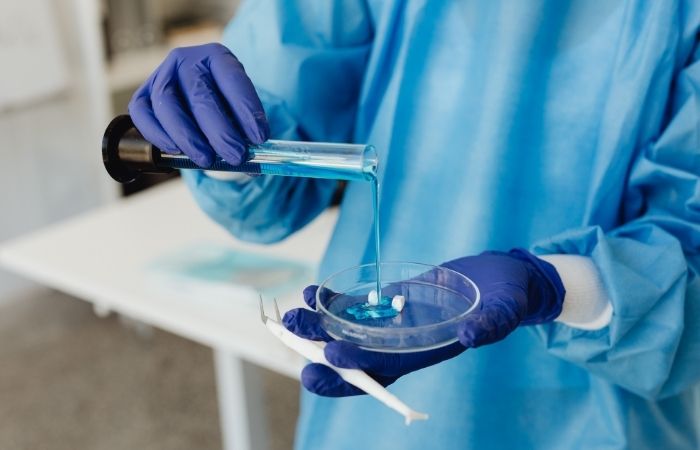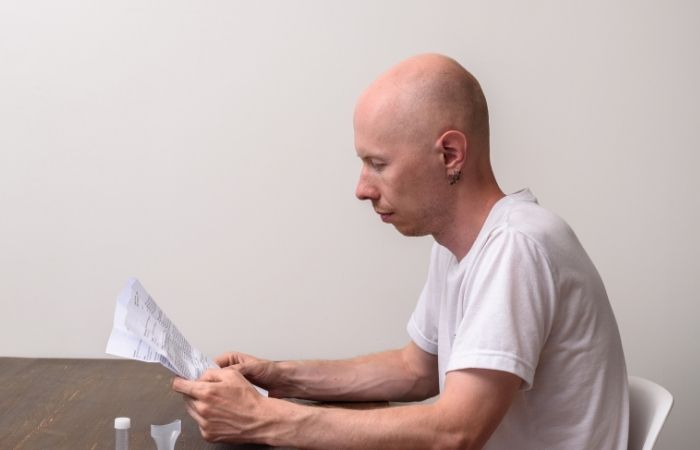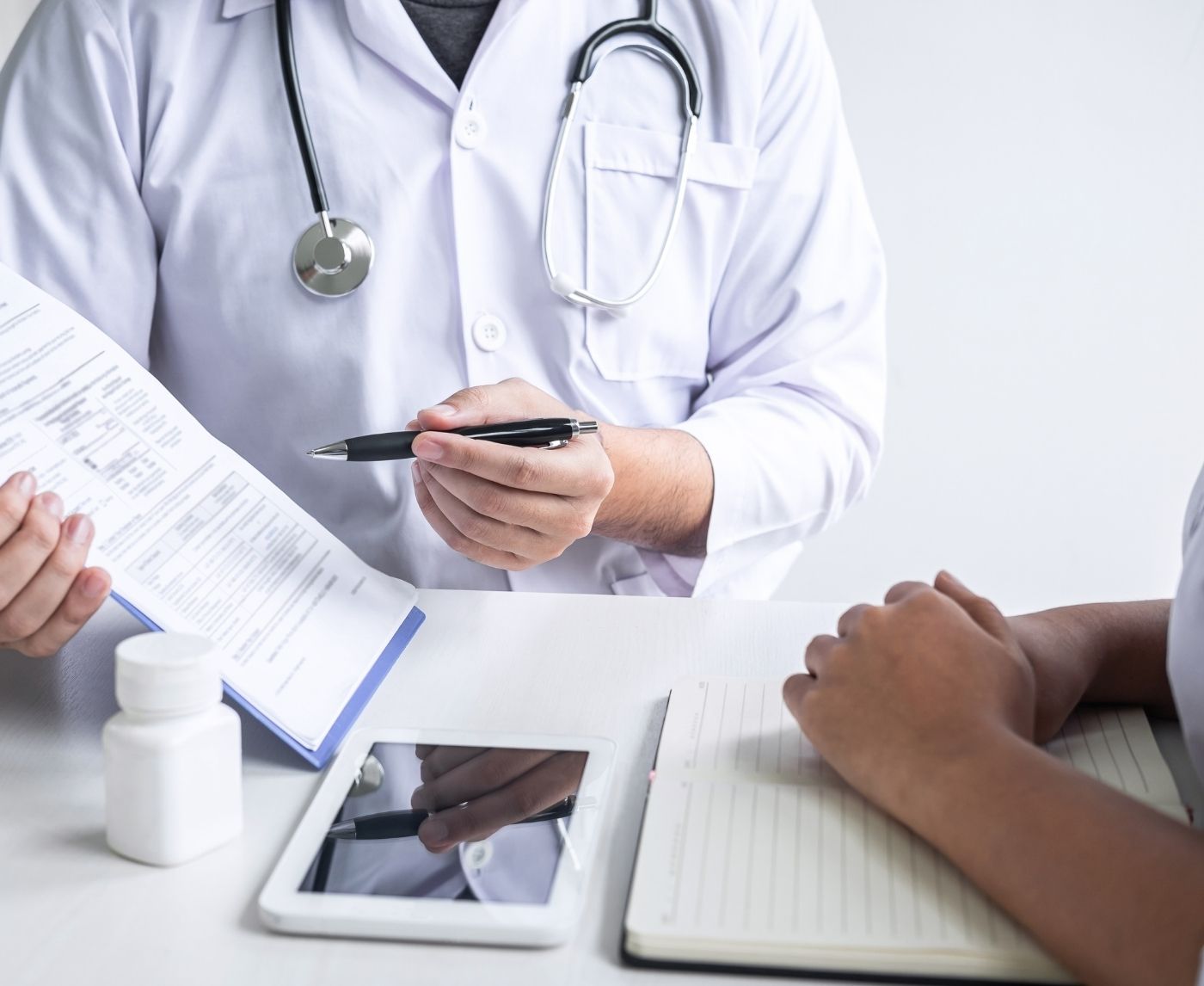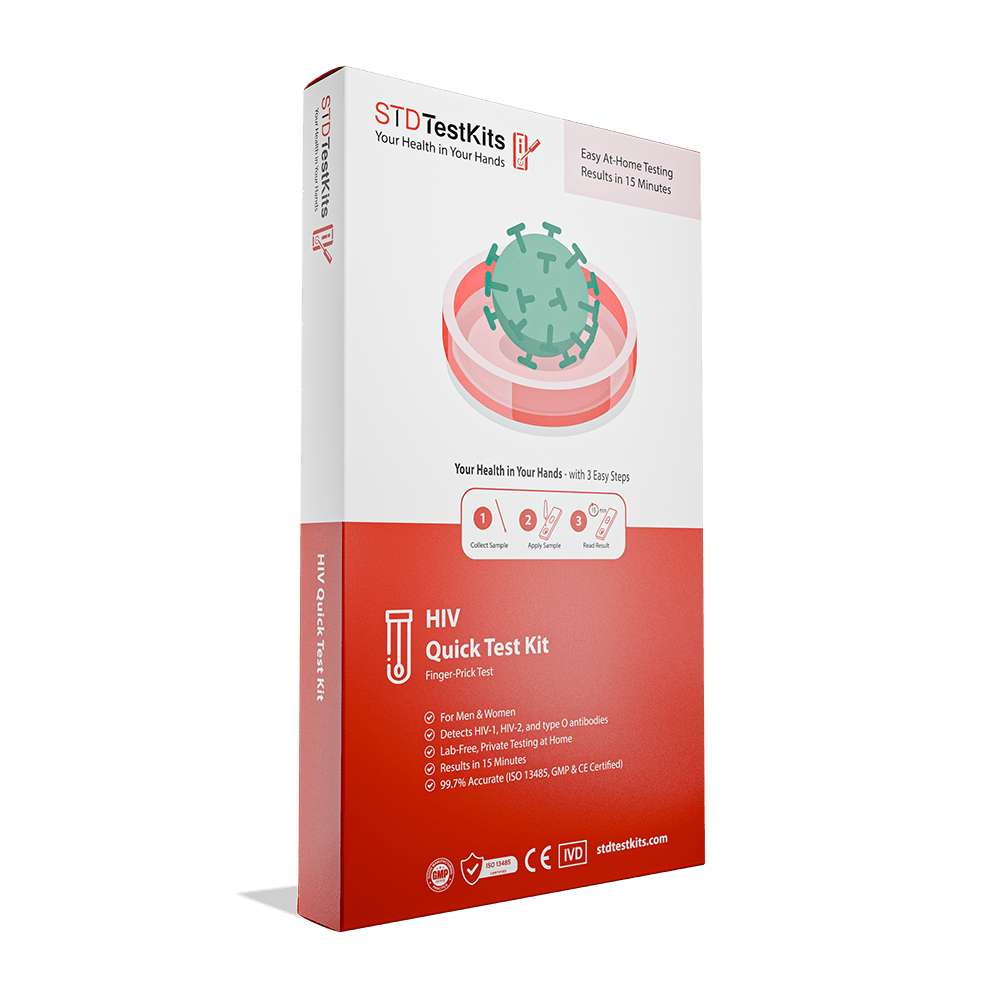The Best STD Test Might Be the One You Take at Home
Quick Answer: A groundbreaking study from Brazil has cleared HIV in a patient using only medication and therapeutic cell therapy , without transplant or gene editing. While not yet mainstream treatment, this major step forward makes early HIV testing more urgent and empowering than ever, especially via at-home kits that support privacy and immediate action.
In an unprecedented interview with Medscape Europe, Dr. Ricardo Sobhie Diaz, the director of Retrovirology at the Retrovirology Laboratory at the UNIFESP university hospital, revealed how they managed to do the impossible, the first reported elimination of the HIV viral load using a carefully designed mix of highly active antiretrovirals, latent reversing agents, and individualized cell therapies.
This kept the patient viral suppressed for more than 78 weeks without the need for a stem cell transplant, a move that until this point had seemed crucial if patients wanted to attain the cured status of being HIV-free. What this could potentially mean is immense.
This guide takes the breakthroughs from Dr. Diaz’s study and reframes them into practical next steps: when to test, what counts as a real HIV test, how early testing affects long-term outcomes, and what it means to get care even before symptoms show. Whether you’re worried about a recent hookup, dealing with recurring symptoms, or just trying to stay ahead of your health, this is for you.

People are also reading: Grindr Just Shipped Over a Million HIV Self-Test Kits, Here’s What That Means for You
Who This Guide Is For (And Why It Matters)
If you've ever Googled something like “Do I need to test for HIV if I used a condom?” or “How soon will HIV show up on a test?”, you’re not alone. This article is for the silently anxious, the curious, the proactive, and the ashamed. It's for people who can’t or won’t go to a clinic, who live in rural areas, who’ve been burned by judgmental providers, or who just want answers now. It’s for queer folks, straight folks, newly partnered people, poly networks, and everyone in between. Because HIV doesn’t care who you are, but access to care should.
Dr. Diaz’s study didn’t just move the medical community closer to a cure. It also reinforced something we’ve long known: early diagnosis changes everything. People diagnosed and treated early reduce their viral reservoir, the very thing this new research targets. That starts with testing. And at-home testing is no longer a second-tier option. It’s fast, private, FDA-approved, and capable of detecting infection as soon as 2–6 weeks after exposure depending on the test type. In this guide, we’ll walk you through how testing works, what the results actually mean, and how new science is reshaping HIV care for everyone, not just those in hospitals or clinical trials.
What Actually Counts as an STD Test?
Not all HIV or STD tests are created equal. The most common and accurate test for HIV today is the Ag/Ab combo test (also called 4th generation), which detects both HIV antibodies and the p24 antigen, a viral protein that shows up early after infection. These tests can identify HIV as soon as 2–6 weeks after exposure. Other options include NAAT tests (Nucleic Acid Amplification), which look for the virus’s genetic material and can detect infection even sooner, sometimes in just 10 days.
At-home HIV testing typically falls into two categories: rapid lateral flow tests (similar to a pregnancy test, with results in 15–20 minutes) or mail-in lab kits, which use dried blood spots or oral fluid sent to a certified lab. Both are FDA-approved when purchased from a trusted source. And while no test is perfect, studies show that at-home HIV kits, when used correctly and at the right time, can be over 92% accurate in detecting new infections. According to CDC guidance on self-testing accuracy, confirmatory lab testing is recommended for any positive at-home result, but rapid tests are a trusted first step.
You can explore discreet, fast options through our trusted platform: STD Test Kits. We also offer combo test kits that screen for multiple STDs in one go, including HIV, syphilis, chlamydia, and more.
Window Periods: What to Know for Each STD
Here’s where it gets real. The window period is the time between exposure to an STD and when it will show up on a test. For HIV, depending on the type of test, that window ranges from 10 days to 6 weeks. Test too early, and you might get a false negative, not because you're in the clear, but because your body hasn't produced enough detectable markers yet. Understanding window periods is crucial, especially with new HIV treatment studies showing that the earlier the virus is suppressed, the smaller the long-term impact.
Figure 1. Window periods vary by infection and test type. Waiting the right number of days improves the chance of an accurate result.
Rapid Test vs Lab Test: Pros, Cons, and Tradeoffs
Picture this: You are sitting in your car outside a drugstore with an at-home rapid HIV test that you purchased. You had unprotected sex a few weeks ago. You’ve Googled the symptoms. You are sweating—a little from nervousness or possibly other reasons. You take the test. It’s negative. Relief engulfs you. But this is the part of the process that wasn’t explained to you until too late: If it’s been under 10 days post-exposure, the test may not mean very much.
Home kits with lateral flow cassettes are most accurate after the right window period. Home kits are great if one wants instant relief but might not diagnose infections early. Laboratory kits sent through the postal system include an application of dried blood spot or fluid tested with more sensitive technology such as ELISA/NAAT. This may identify an early infection of the HIV virus. Laboratory kits include the highest levels of accuracy but carry certain disadvantages regarding time, risk of contact, and stigma.
Figure 2. Testing method comparison for HIV and common STDs. The best option depends on exposure date, symptoms, and emotional readiness.
When to Test After Exposure
Let’s say you hooked up with someone new eight days ago. No symptoms yet, but the anxiety is creeping in. You want to test now. Here’s the truth: you can test now, but you’ll likely need to test again later. HIV tests like the Ag/Ab combo are most accurate around 3–6 weeks after exposure. Some at-home kits can catch it earlier, especially if they use NAAT, but retesting is often still needed.
Think of it like this: If it’s been under 10 days, you’re testing for peace of mind, not precision. If it’s been 10–14 days, you might get a reliable result, but follow-up is still recommended. At 14+ days, most modern HIV tests perform well. If symptoms show up later, fever, fatigue, rash, or swollen lymph nodes, retest immediately.
Case in point: In one scenario reported in a support forum, a 28-year-old man tested negative with a rapid oral swab at day seven. But at day 16, after night sweats and body aches, a lab NAAT returned a positive result. His second test didn’t just confirm infection, it got him into care early, improving his chances of long-term viral suppression.
Do You Need to Retest? Here’s How to Know
Retesting isn’t just a backup, it’s a smart strategy. For HIV, retesting might be needed if your first test was taken before the 30-day mark or if you’ve had ongoing exposures. In Dr. Diaz’s groundbreaking research, long-term suppression of viral reservoirs was only achieved through constant monitoring and sustained treatment. That starts with catching infections early, then confirming they’re truly cleared.
If you’re on PrEP, got treated for another STD, or had a partner test positive, retesting after 45 days is a good rule of thumb. It ensures you’re not in that fuzzy period where the virus is too low to detect but still active enough to spread. If you’ve started treatment, your care team may ask for a follow-up test 2–3 months later to ensure it’s working. But even without a provider, you can take charge. Testing again at 30–45 days post-exposure gives you clarity and confidence.
In one story shared anonymously online, a woman retested after finishing antibiotics for chlamydia, not because she had symptoms, but because her gut told her something was off. Turns out, she’d been exposed to HIV during the same encounter. That retest may have saved her life.
Privacy, Shipping, and Discreet Support
Let’s talk about the stuff no one explains, like what it’s actually like to wait for an HIV test result, especially if you ordered a kit online. The ticking clock, the worry about who might see the package, the fear of someone asking questions. At-home testing isn’t just about convenience; it’s about dignity. That’s why discreet shipping matters, and it’s why companies like ours build entire systems to protect it.
Every at-home STD test from STD Test Kits arrives in plain, unmarked packaging. There’s no logo. No health-related language. No branding that hints at what’s inside. And when it comes to privacy, your data is treated like clinical gold, encrypted, never shared, and kept off your insurance records unless you choose otherwise. The goal is simple: you get the results, and only you.
If you’re ordering from a rural area or traveling, plan ahead. Most kits arrive within 2–4 business days. If you're testing before a weekend trip or during a stressful period, keep that shipping time in mind. And if you have symptoms that feel urgent, like unexplained fever, sores, or persistent fatigue, get medical care as soon as possible. At-home kits are an incredible tool, but they don’t replace emergency services or in-person clinical support when it’s truly needed.
What If You Test Positive?
Here’s where the stigma screams the loudest, but it doesn’t have to. If your at-home HIV test comes back positive, it doesn’t mean you're dirty, doomed, or alone. It means you're now one of the millions of people with a manageable condition, and you’re ahead of it. Most STDs, including HIV, are treatable. HIV treatment today is more effective, tolerable, and life-extending than ever. And according to Dr. Diaz’s research, staying in care not only keeps the virus undetectable but may soon become the foundation for an actual cure.
Your next steps are simple, though rarely easy. First, confirm the result with a lab or clinic. Clinics offer free confirmatory HIV testing, often with counseling and immediate linkage to care. If that’s not an option, telehealth platforms can help guide your next moves. The most important thing is to avoid isolation. Telling a partner, seeking a provider, or even joining an online support group can radically shift your experience.
Case example: One reader described taking an at-home combo kit after a rough breakup. When the result flashed positive for HIV, she sat frozen for nearly 40 minutes in her bedroom. Eventually, she reached out to a friend, then a provider. Three months later, she was in treatment, undetectable, and, more than anything, no longer terrified. She tested her last partner, who turned out negative. They’ve both moved forward, armed with facts instead of fear.

People are also reading: Tested Positive for Chlamydia Twice? Here’s How to Talk to Your Partner
FAQs
1. Can you really test for HIV at home?
Yes, and it’s not sketchy or experimental. At-home HIV tests are FDA-approved, lab-verified, and shockingly easy to use. You swab your gums or do a fingerstick, follow the instructions, and get results in as little as 15 minutes. Or, if you want extra accuracy, you can mail a sample to a certified lab and track results online, no awkward waiting room stares required.
2. Is it true that someone was cured of HIV without a transplant?
It’s not just a rumor, it’s real. In Brazil, a patient was cleared of HIV for 78 weeks with a combo of medications and therapeutic cell treatment, no stem cell transplant involved. It’s not a universal cure yet, but it’s a huge leap forward. And it reminds us: early diagnosis still matters more than ever.
3. What’s the difference between a rapid HIV test and a lab one?
Rapid tests give results fast, often in 20 minutes or less, but they’re best after a longer window (like 3+ weeks post-exposure). Lab tests (especially Ag/Ab combo or NAAT) are more sensitive and can catch the virus earlier. Think of it like this: rapid tests are the Tinder of testing, quick and convenient. Labs are more like a second date where you actually read the profile.
4. How soon after sex can I get a reliable result?
Depends on the type of test, but the sweet spot for most HIV testing is around 2 to 4 weeks post-exposure. Earlier than that, you’re rolling the dice. Some folks test at 10 days for peace of mind, then retest at 30 to be sure. If that sounds annoying, remember: catching HIV early can literally change the rest of your life. Worth the retest.
5. What if I don’t have symptoms, should I still test?
Absolutely. Most people with HIV don’t have any symptoms at first. Or the symptoms feel like a hangover or a bad cold, easy to brush off. If you've had any kind of unprotected sex, shared a needle, or just have that gut feeling something's off, trust it. Testing isn’t about punishment, it’s information. And info is power.
6. Can I stay anonymous if I order a kit?
Yes, 100%. No one’s name goes on the box. No logos. No awkward pharmacy encounters. The kits are shipped in plain, unmarked packaging, and results stay private. You don’t even have to use your real name for mail-in labs, just a code. Your sex life is your business. Full stop.
7. Do I need to tell my partner if I test positive?
Legally, that depends on where you live. Morally? Yeah, they deserve to know. But here’s the thing: you don’t have to do it alone. There are anonymous partner notification tools, telehealth counselors, and scripts you can follow if you're nervous. Honesty doesn’t have to mean shame, it can mean protection, healing, even connection.
8. How often should I test for HIV?
If you’re sexually active with new or multiple partners, aim for every 3–6 months. On PrEP? Stick to quarterly testing. In a monogamous relationship where both of you tested negative? Once a year might be fine. The key is to match your testing rhythm to your actual sex life, not some outdated rulebook.
9. What happens if I test positive?
First: breathe. Then confirm it with a lab test. After that, you’ll likely start treatment, a single daily pill in most cases. Today’s meds can get your viral load so low it’s undetectable, meaning you can’t pass it on (yep, “undetectable = untransmittable” is real). A positive result isn’t the end of anything. It’s the beginning of staying alive, and thriving, with support, care, and options.
10. Can I get HIV more than once?
You can’t “catch” HIV again once you have it, but you can be exposed to different strains or face reinfection complications if you’re not in care. This is why regular follow-ups, medication adherence, and rechecking your viral load matter. Think of it like staying in shape, you don’t go to the gym once and call it done.
You Deserve Answers, Not Assumptions
Whether you read about Dr. Diaz’s research in a headline or stumbled on this article at 3AM in a panic spiral, one thing is clear: a cure may be closer than ever, but that doesn’t replace the need for early testing and care. The real win of this study isn’t just scientific, it’s personal. It reminds us that HIV isn’t a life sentence. It’s a condition you can monitor, manage, and maybe one day erase entirely.
If this sounds like you, that’s fine too. However, don’t hesitate and wonder what might happen. This at-home combined test kit will conveniently and accurately give you the results regarding the most frequently occurring STDs.
How We Sourced This Article: We combined current guidance from leading medical organizations with peer-reviewed research and lived-experience reporting to make this guide practical, compassionate, and accurate. In total, around fifteen references informed the writing; below, we’ve highlighted some of the most relevant and reader-friendly sources.
Sources
1. ‘We Are Getting Closer to Finding a Real Cure for HIV’ – Medscape Europe
2. HIV.gov – Global HIV Statistics
3. HIV Testing Overview | HIV.gov
4. HIV Testing | Centers for Disease Control and Prevention
About the Author
Dr. F. David, MD is a board-certified infectious disease specialist focused on STI prevention, diagnosis, and treatment. He blends clinical precision with a no-nonsense, sex-positive approach and is committed to expanding access for readers in both urban and off-grid settings.
Reviewed by: Alexandra L. Ramos, NP-C | Last medically reviewed: November 2025






